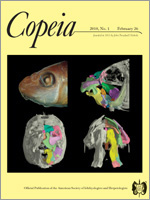Spatial patterns of animals have important implications for population dynamics and can reveal other key aspects of a species' ecology. Movements and the resulting spatial arrangements have fitness and genetic consequences for both individuals and populations. We studied the spatial and dispersal patterns of the Oregon Gartersnake, Thamnophis atratus hydrophilus, using capture–recapture techniques. Snakes showed aggregated dispersion. Frequency distributions of movement distances were leptokurtic; the degree of kurtosis was highest for juvenile males and lowest for adult females. Males were more frequently recaptured at locations different from their initial capture sites, regardless of age class. Dispersal of neonates was not biased, whereas juvenile and adult dispersal were male-biased, indicating that the mechanisms that motivate individual movements differed by both age class and sex. Males were recaptured within shorter time intervals than females, and juveniles were recaptured within shorter time intervals than adults. We attribute differences in capture intervals to higher detectability of males and juveniles, a likely consequence of their greater mobility. The aggregated dispersion appears to be the result of multi-scale habitat selection, and is consistent with the prey choices and related foraging strategies exhibited by the different age classes. Inbreeding avoidance in juveniles and mate-searching behavior in adults may explain the observed male-biased dispersal patterns.
How to translate text using browser tools
26 February 2010
Spatial Ecology of the Oregon Gartersnake, Thamnophis atratus hydrophilus, in a Free-Flowing Stream Environment
Hartwell H. Welsh,
Clara A. Wheeler,
Amy J. Lind
ACCESS THE FULL ARTICLE





